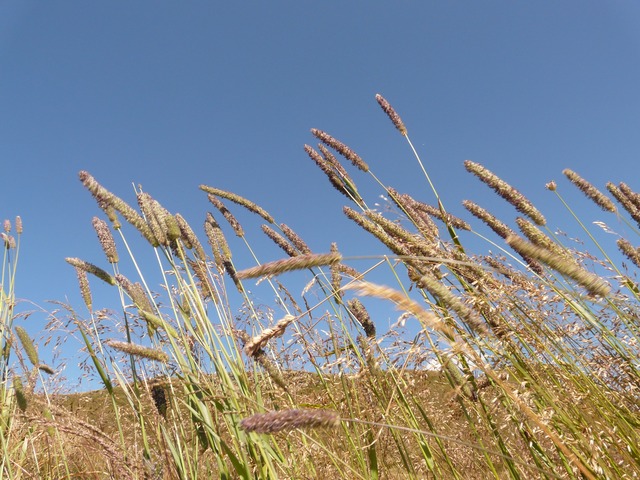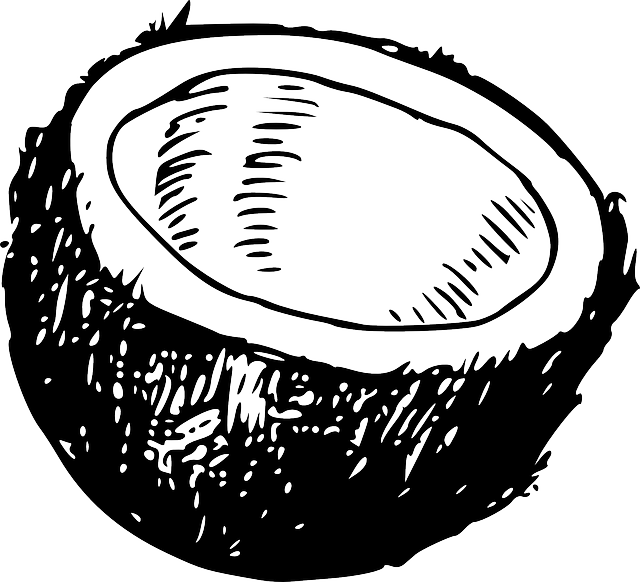الآرامية الحديثة الآشورية
| Assyrian Neo-Aramaic | |
|---|---|
| ܣܘܪܝܬ Sūreṯ, ܠܫܢܐ ܐܬܘܪܝܐ Līšānā Āṯūrāyā, ܠܫܢܐ ܐܫܘܪܝܐ Līšānā Āšūrāyā, ܠܫܢܐ ܣܘܕܝܐ Līšānā Swāḏāyā, Āšūrī | |
|
Sūreṯ in written Syriac
(Madnkhaya script) | |
| النطق | [surɛt, surɛθ] |
| موطنها | Iraq, Syria, Iran, هجريا |
| المنطقة | Northern Iraq, western Iranian Azerbaijan and Kurdistan, northeast Syria near the Turkish border. Extinct in هجريا. Parts of southern Armenia. |
الناطقون الأصليون |
232,300 (2015)e18 |
عائلة اللغات |
الأفرو-آسيوية
|
| اللهجات | Urmian, Iraqi Koine, Tyari, Jilu, Nochiya, Barwari, Baz, Gawar and Chaldean Neo-Aramaic |
نظام الكتابة |
|
| أكواد اللغات | |
| ISO 639-3 | aii |
| Glottolog | assy1241 |
نطقب:Assyrian people الآرامية الحديثة الآشورية (ܣܘܪܝܬ؛ Sūreṯ؛ بالإنگليزية: Assyrian Neo-Aramaic)، أوببساطة Assyrian، هي Neo-Aramaic language within the Semitic branch of the Afro-Asiatic language family that is largely spoken by Assyrian people, who are also known as Syriac Christians. The various Assyrian Aramaic dialects, including Assyrian Neo-Aramaic, have been heavily influenced by Classical Syriac, the Middle Aramaic dialect of Edessa, after its adoption as an official liturgical language, and they are ultimately descended from Old Aramaic, the lingua franca in the later phase of the Neo-Assyrian Empire, displacing the East Semitic Assyrian dialect of Akkadian beginning around the 10th century BC.
Assyrian Neo-Aramaic is spoken by an estimated 200,000 people who are native to Upper Mesopotamia, which is a large region stretching from the plain of Urmia in northwestern Iran to the Nineveh plains, and the Irbil, Kirkuk and Duhok regions in northern Iraq, together with the Al Hasakah region of northeastern Syria, and parts of southeastern هجريا. Instability throughout the Middle East over the past century has led to a worldwide diaspora of Assyrian speakers, with many speakers now living abroad in such places as North America, Australia and Europe. Speakers of Assyrian Neo-Aramaic, Chaldean Neo-Aramaic and Turoyo are ethnic Assyrians and are descendants of the ancient Assyrian inhabitants of Northern Mesopotamia.
Assyrian Neo-Aramaic is one of the largest Neo-Aramaic languages (232,000 speakers), with Chaldean Neo-Aramaic (213,000 speakers) and Turoyo (250,000 speakers) making up most of the remaining Neo-Aramaic speakers. Despite the terms "Chaldean Neo-Aramaic" and "Assyrian Neo-Aramaic" indicating a separate ethnoreligious identity, both the languages and their native speakers originate from the same Upper Mesopotamian region (historic Assyria).
Assyrian Neo-Aramaic is, to a significant degree, mutually intelligible with Chaldean Neo-Aramaic and they are sometimes considered to constitute dialects of the same language rather than two separate languages. To a moderate degree, Assyrian is also intelligible with Senaya, Lishana Deni and Bohtan Neo-Aramaic (which are, at times, also considered to be dialects of Assyrian Neo-Aramaic), and is partially intelligible with Lishan Didan, Hulaulá and Lishanid Noshan. Its mutual intelligibility with Turoyo, a Central Neo-Aramaic language, is rather limited.
Assyrian Neo-Aramaic is a moderately-inflected, fusional language with a two-gender noun system and rather flexible word order. There is some Akkadian influence in the language. Due to its location and cultural influences, the speakers may use Iranian, الإنگليزية and Arabic loanwords, depending on where they live or where their family came from. Assyrian Neo-Aramaic is written from right-to-left and it uses the Madnhāyā version of the Syriac alphabet. Assyrian, alongside other modern Aramaic languages, is now considered endangered.
التاريخ
Aramaic was the language of commerce, trade and communication and became the vernacular language of Assyria in the late Iron Age and classical antiquity. It became the lingua franca of the Neo-Assyrian Empire (911–605 BC), Neo-Babylonian Empire (605–539 BC), the Achaemenid Empire (539–323 BC), the Parthian Empire (247 BC–224 AD), and the Sasanian Empire (224–651 AD). Aramaic writing has been found as far north as Hadrians Wall in Ancient Britain, in the form of inscriptions in Aramaic, made by Assyrian and Aramean soldiers serving in the Roman Legions in northern England during the 2nd century AD.
The Assyrian Empire resorted to a policy of deporting troublesome conquered peoples (predominantly fellow Semitic Aramean tribes as well as many Jews) into the lands of Mesopotamia. By the 6th century, the indigenous and originally Akkadian-speaking Semites of Assyria and Babylonia, spoke Akkadian-infused dialects of Eastern Aramaic. Consequently, during the Persian rule of Assyria, Aramaic gradually became the main language spoken by the Assyrians. Even before the Empire fell, Aramaic had become the lingua franca of its empire and Assyrians were capable of speaking both Akkadian and Aramaic.
Local unwritten Aramaic dialects emerged from Imperial Aramaic in Assyria–northern Mesopotamia, an Akkadian-influenced version of the Old Aramaic language which was introduced as the lingua franca of the Neo-Assyrian Empire by Tiglath-Pileser III (745–727 BC) The first evidence of such dialects emerged in Assyria, and begin to influence the written Imperial Aramaic from the 5th century BC. Following the Achaemenid conquest of Assyria under Darius I, the Aramaic language was adopted as the "vehicle for written communication between the different regions of the vast empire with its different peoples and languages". After the conquest of Assyria by the Seleucid Empire in the late 4th century BC, Imperial Aramaic and other Aramaic dialects gradually lost their status as imperial languages but continued to flourish as lingua francas alongside Ancient Greek.
By the 1st century AD, Akkadian was extinct, although some loaned vocabulary and grammatical features still survives in Assyrian Neo-Aramaic and other Assyrian languages to this day. The Neo-Aramaic languages evolved from Middle Aramaic by the 13th century. There is evidence that the drive for the adoption of Syriac was led by missionaries. Much literary effort was put into the production of an authoritative translation of the Bible into Syriac, the Peshitta (ܦܫܝܛܬܐ, Pšīṭtā). At the same time, Ephrem the Syrian was producing the most treasured collection of poetry and theology in the Classical Syriac language.
By the 3rd century AD, churches in Edessa in the kingdom of Osroene began to use Syriac as the language of worship and the language became the literary and liturgical language of many churches in the Fertile Crescent. Syriac was the lingua franca of the Middle East until 900 AD, when it was superseded by Arabic in a centuries-long process having begun in the Arab conquests. The differences with the Church of the East led to the bitter Nestorian schism in the Syriac-speaking world. As a result of the schism as well as being split between living in the Byzantine Empire in the west and the Sasanian Empire in the east, Syriac developed distinctive western and eastern varieties. Although remaining a single language with a high level of comprehension between the varieties, the two employ distinctive variations in pronunciation and writing systems and, to a lesser degree, in vocabulary and grammar.
The Mongol invasions of the 13th century and the religiously motivated massacres of Assyrians by Tamurlane further contributed to the rapid decline of the language. In many places outside of northern Mesopotamia (the Assyrian homeland), even in liturgy, the language was replaced by Arabic.
الكتابة
التاريخ
The original Mesopotamian writing system, believed to be the world's oldest, was derived around 3600 BC from this method of keeping accounts. By the end of the 4th millennium BC, the Mesopotamians were using a triangular-shaped stylus made from a reed pressed into soft clay to record numbers.
Around 2700 BC, cuneiform began to represent syllables of spoken Sumerian, a language isolate genetically unrelated to the Semitic and Indo-Iranian languages that it neighboured. About that time, Mesopotamian cuneiform became a general purpose writing system for logograms, syllables and numbers. This script was adapted to another Mesopotamian language, the East Semitic Akkadian (Assyrian and Babylonian) around 2600 BC. With the adoption of Aramaic as the 'lingua franca' of the Neo-Assyrian Empire (911–609 BC), Old Aramaic was also adapted to Mesopotamian cuneiform. The last cuneiform scripts in Akkadian discovered thus far date from the 1st century AD.
التطور الحديث
نطقب:Script/Mdnh
Ṭūḇayhōn l-ʾaylên da-ḏḵên b-lebbhōn, d-hennōn neḥzōn l-ʾǎlāhā.
'Blessed are the pure in heart, for they shall see God.'
الحروف
|
الأبجدية السريانية (200 ق.م.–الحاضر) |
| ܐ ܒ ܓ ܕ ܗ ܘ |
| ܙ ܚ ܛ ܝ ܟܟ ܠ |
| ܡܡ ܢܢ ܣ ܥ ܦ |
| ܨ ܩ ܪ ܫ ܬ |
الصوتيات
Consonants
| Labial |
Dental/ Alveolar |
Palatal | Velar | Uvular | geal | Glottal | |||||||||||
|---|---|---|---|---|---|---|---|---|---|---|---|---|---|---|---|---|---|
| plain | emp. | ||||||||||||||||
| Nasal | m | n | |||||||||||||||
| Stop | p | b | t | d | tˤ | (c) | k | ɡ | q | ʔ | |||||||
| Affricate | t͡ʃ | d͡ʒ | |||||||||||||||
| Fricative | sibilant | s | z | sˤ | ʃ | (ʒ) | |||||||||||
| non-sibilant | f | (v) | θ | ð | x | (ɣ) | (ʕ) | h | |||||||||
| Approximant | w | l | j | ||||||||||||||
| Trill | r | ||||||||||||||||
- The pharyngeal /ʕ/, represented by the letter `e (ܥ), is a marginal phoneme that is generally upheld in formal or religious speech. Among the majority of Assyrian speakers, would be realized as [aɪ̯], [eɪ̯], [ɛ] or even geminating the previous consonant, depending on the dialect. However, the letter itself is still usually pronounced [ʕ].
- /f/ is a phoneme only heard in the Tyari, Barwari and Chaldean dialects. In most of the other Assyrian varieties, it merges with /p/.
- [θ] and [ð] are strictly used in the Tyari, Barwari and Chaldean dialects, which respectively merge with /t/ and /d/ in standard Assyrian (Iraqi Koine/Urmian) and other Ashiret dialects. Furthermore, in the Upper Tyari dialects, /t/ is mostly palatalized and replaced with /ʃ/. As such, due to the palatalization, the word beta ("house") in standard Assyrian will be pronounced as beša. In the Marga dialect, the /t/ may at times be replaced with [s] (besa).
- In the Urmian dialect, /w/ has a widespread allophone: [ʋ] (it may vacillate to [v] for some speakers).
- In some Jilu speakers, /q/ may be uttered as [k]. As such, qalama ("pen") will be pronounced as kalama.
- /ɡ/ is affricated and thus pronounced as [d͡ʒ] in the Urmian and some Tyari dialects. Therefore, garma ("bone") in standard Assyrian will be uttered as jarma.
- /k/ may be affricated as [t͡ʃ] in Urmian and Nochiya speakers. So for example, kma ("how much/many?") will be pronounced as čma.
- /ɣ/ is a marginal phoneme that occurs in a few words, albeit only for some speakers (mainly those who speak Arabic as a second language). For others, it is realized as [x].
- In some Tyari and Chaldean dialects /r/ may be realized as [ɹ] or [ɽ].
- /ʒ/ is found only in foreign words (usually from Turkic or Iranian languages): e.g. žara, "poor, pitiful"; dižmin, "enemy"; pežgir, "towel".
- Some Urmian dialects may realize /k/ as [c].
- In some speakers, a dental click (English "tsk") may be used para-linguistically as a negative response to a "yes or no" question. This feature is more common among those who still live in the homeland or in the Middle East, than those living in the diaspora.
الحروف المتحركة
Vowel phonemes of Assyrian Neo-Aramaic (Standard Urmian/Iraqi Koine) are as follows:
| Front | Central | Back | |
|---|---|---|---|
| Close | i | u | |
| Mid | e | ə | o |
| Open | a | ||
- /a/, as commonly uttered in words like naša ("man") and nara ("river"), is central [ä] for many speakers. Though it is usually [a] in the Urmian and Nochiya dialects. For some Urmian and Jilu speakers, [æ] may be used instead. In those having a thicker Jilu dialect, this vowel is mostly fronted and raised to [ɛ]. In the Tyari and Barwari dialects, it is usually more back [ɑ].
- /ɑ/, a long vowel, as heard in raba ("much"), may also be realised as [ɒ], depending on the speaker. It is more rounded and higher in the Urmian dialect, where it is realized as [ɔ].
- /e/, heard in beta ("house") is generally diphthongized to [eɪ̯] in the Halmon dialect (a Lower Tyari tribe). To note, the [aj] diphthong is a vestigial trait of classical Syriac and thereby it may be used in formal speech as well, such as in liturgy and hymns.
- /e/, retained in Tyari, Barwari, Chaldean and Baz dialects, as in kēpa ("rock"), is raised to [i] kīpa in Urmian and some other dialects.
- /ə/ (a schwa), uttered in words like didwa ("housefly"), is mostly realized as [ɪ] in the Tyari and Barwari dialects.
- /u/, as in gura ("big"), may be realized as [ɔ] in the Tyari, Baz, Chaldean and Barwari dialects. The Urmian dialect may diphthongize it to [uj].
- /o/, as in tora ("cow") may be diphthongized to [aw] in some Tyari, Barwari, Chaldean and Jilu dialects.
- Across many dialects, /u/ or /o/ in a closed syllable is usually realized as [ʊ].
- Across many dialects, /i/ or /e/ in a closed syllable is usually realized as [ɪ].
النحو
الضمائر الشخصية
In Assyrian, personal pronouns have seven forms. In singular forms, the 2nd and 3rd have separate masculine and feminine forms, while the 1st (and, in some dialects, the 2nd person subject pronoun) do(es) not. The plural forms also lack gender distinction.
| العدد | person | subject pronoun | object pronoun |
|---|---|---|---|
| singular | 1st person | ana ("I") | li ("me") |
| 2nd person (masc.) | at, ati or aten ("you," ["thou"]) | lux ("you," ["thee"]) | |
| 2nd person (fem.) | ati or aten ("you," ["thou"]) | lex or lax ("you," ["thee"]) | |
| 3rd person (masc.) | aw ("he") | leh ("him") | |
| 3rd person (fem.) | ay ("she") | lah ("her") | |
| plural | 1st person | axnan or axni ("we") | lan ("us") |
| 2nd person | axtun or axtoxun ("you [pl.]") | loxun ("you [pl.]") | |
| 3rd person | ani ("they") | lhon or lehe ("them") |
| جذر | Verb (masc. active participle) | English | |
|---|---|---|---|
| الكتابة السريانية | النطق | ||
| Peal | ܨܵܠܹܐ | ṣālē | "he goes down" |
| Pael | ܡܨܲܠܹܐ | mṣālē (classically, mṣallē) | "he prostrates; prays" |
| Aphel | ܡܲܨܠܹܐ | maṣlē | "he brings down; makes go down" |
The particle [h]wā (ܗ݇ܘܵܐ) may follow verbal forms to indicate an action further in the past (e.g. ܨܵܠܹܐ ܗ݇ܘܵܐ, ṣālē [h]wā, "he used to go down").
Assyrian may also feature double negatives, such as in sentences like le yawin la zuze ("I won't give no money"). Common negation words include la, hič and čuh, depending on usage and dialect.
- جذور الأفعال
| Aspect | الجذر |
|---|---|
| Imperative | ptux ("open!") |
| Indicative | patx- ( + k- / ki- present, bit- future, qam- past, transitive, definite object) ("opens") |
| Perfect | ptix- (perfect participle, f. ptixta, m. ptixa, pl. ptixe) ("opened") |
| Gerund | (bi-)ptaxa ("opening") |
الأسماء
الأفعال
الشدة
 |
("theirs")
An unstressed -eh denotes a singular possessive form (masc.), whereas a stressed -éh هوضمير الملكية الجمع للشخص الثالث.
|
|
هل لديك معضلة في تشغيل هذا الملف،يا ترى؟ انظر مساعدة الوسائط. | |
الشائعة العراقية
انظر أيضاً
- الآشوريون (شعب)
- اللغة الآرامية
- الأبجدية السريانية
- اللغة السريانية
- الآرامية الحديثة الآشورية اليهودية
- List of loanwords in Assyrian Neo-Aramaic
Notes
- ^ http://www.unesco.org/languages-atlas/index.php?hl=en&page=atlasmap
- ^ نطقب:Glottolog
- ^ Nordhoff, Sebastian; Hammarström, Harald; Forkel, Robert; Haspelmath, Martin, eds. (2013). "Northeastern Neo-Aramaic". Glottolog 2.2. Leipzig: Max Planck Institute for Evolutionary Anthropology.
- ^ Blench, 2006. The Afro-Asiatic Languages: Classification and Reference List
- ^ Beyer, Klaus; John F. Healey (trans.) (1986). The Aramaic Language: its distribution and subdivisions. Göttingen: Vandenhoeck und Ruprecht. p. 44. ISBN 3-525-53573-2.
- ^ Bae, C. Aramaic as a Lingua Franca During the Persian Empire (538-333 BCE). Journal of Universal Language. March 2004, 1-20.
-
^ خطأ استشهاد: وسم
<ref>غير سليم؛ لا نص تم توفيره للمراجع المسماةe18 - ^ Maclean, Arthur John (1895). Grammar of the dialects of vernacular Syriac: as spoken by the Eastern Syrians of Kurdistan, north-west Persia, and the Plain of Mosul: with notices of the vernacular of the Jews of Azerbaijan and of Zakhu near Mosul. Cambridge University Press, London.
- ^ Assyrians After Assyria, Parpola
- ^ The Fihrist (Catalog): A Tench Century Survey of Islamic Culture. Abu 'l Faraj Muhammad ibn Ishaq al Nadim. Great Books of the Islamic World, Kazi Publications. Translator: Bayard Dodge.
- ^ Herodotus, The Histories, VII.63, s:History of Herodotus/Book 7
- ^ From a lecture by J. A. Brinkman: "There is no reason to believe that there would be no racial or cultural continuity in Assyria, since there is no evidence that the population of Assyria was removed." Quoted in Efram Yildiz's "The Assyrians" Journal of Assyrian Academic Studies, 13.1, pp. 22, ref 24
- ^ Especially in view of the very early establishment of Christianity in Assyria and its continuity to the present and the continuity of the population, I think there is every likelihood that ancient Assyrians are among the ancestors of modern Assyrians of the area." Biggs, pp. 10
-
^ *MacDonald, Kevin (2004-07-29). "Socialization for Ingroup Identity among Assyrians in the United States". Paper presented at a symposium on socialization for ingroup identity at the meetings of the International Society for Human Ethology, Ghent, Belgium. Archived from the original on 2007-06-10.
Based on interviews with community informants, this paper explores socialization for ingroup identity and endogamy among Assyrians in the United States. The Assyrians descent from the population of ancient Assyria (founded in the 24th century BC), and have lived as a linguistic, political, religious, and ethnic minority in Iraq, Iran, Syria and Turkey since the fall of the Assyrian Empire in 608 BC. Practices that maintain ethnic and cultural continuity in the Near East, the United States and elsewhere include language and residential patterns, ethnically based Christian churches characterized by unique holidays and rites, and culturally specific practices related to life-cycle events and food preparation. The interviews probe parental attitudes and practices related to ethnic identity and encouragement of endogamy. Results are being analyzed.
- ^ Tekoglu, R. & Lemaire, A. (2000). La bilingue royale louvito-phénicienne de Çineköy. Comptes rendus de l’Académie des inscriptions, et belleslettres, année 2000, 960-1006.
- ^ Avenery, Iddo, The Aramaic Dialect of the Jews of Zakho. The Israel academy of Science and Humanities 1988.
- ^ Heinrichs, Wolfhart (ed.) (1990). Studies in Neo-Aramaic. Scholars Press: Atlanta, Georgia. ISBN 1-55540-430-8.
- ^ Tezel, Aziz (2003). Comparative Etymological Studies in the Western Neo-Syriac (Ṭūrōyo) Lexicon: with special reference to homonyms, related words and borrowings with cultural signification. Uppsala Universitet. ISBN 91-554-5555-7.
- ^ Khan 2008, pp. 6
- ^ [1]
- ^ The Nestorians and their Rituals; George Percy Badger.
- ^ A Short History of Syriac Christianity; W. Stewart McCullough.
- ^ Naby, Eden. "From Lingua Franca to Endangered Language". Assyrian International News Agency.
- ^ "Microsoft Word - PeshittaNewTestament.doc" (PDF). Archived from the original (PDF) on 2 December 2008. Retrieved 2008-11-16.
- ^ Aramaic Documents of the Fifth Century B. C. by G. R. Driver
- ^ The British Survey, By British Society for International Understanding, 1968, page 3
- ^ https://www.theguardian.com/culture/charlottehigginsblog/2009/oct/13/hadrians-wall
- ^ Parpola, Simo (2004). "National and Ethnic Identity in the Neo-Assyrian Empire and Assyrian Identity in Post-Empire Times" (PDF). Journal of Assyrian Academic Studies. JAAS. 18 (2). Archived from the original (PDF) on 2011-07-17.
-
^ Sabar, Yona (1975). "The impact of Israeli Hebrew on the Neo-Aramaic dialect of the Kurdish Jews of Zakho: a case of language shift". Hebrew Union College Annual (46): 489–508.
- Sabar, Yona (2002). A Jewish Neo-Aramaic Dictionary. Harrassowitz. ISBN .
- ^ Drijvers, H. J. W. (1980). . Brill Archive. p. 1. ISBN .
- ^ Kaufman, Stephen A. (1974),The Akkadian influences on Aramaic. University of Chicago Press
- ^ Shaked, Saul (1987). "Aramaic". Encyclopedia Iranica. 2. New York: Routledge & Kegan Paul. pp. 250–261. p. 251
- ^ Frye, Richard N.; Driver, G. R. (1955). "Review of G. R. Driver's "Aramaic Documents of the Fifth Century B. C."". Harvard Journal of Asiatic Studies. 18 (3/4): 456–461. doi:10.2307/2718444. p. 457.
- ^ Bird, Isabella, Journeys in Persia and Kurdistan, including a summer in the Upper Karun region and a visit to the Nestorian rayahs, London: J. Murray, 1891, vol. ii, pp. 282 and 306
- ^ Odisho, Edward Y. (2001). „ADM’s educational policy: A serious project of Assyrian language maintenance and revitalization “, Journal of Assyrian Academic Studies, XV/1:3-31.
- ^ The Origin and Development of the Cuneiform System of Writing, Samuel Noah Kramer, Thirty Nine Firsts In Recorded History pp 381–383
- ^ Brock, Sebastian (2006). An Introduction to Syriac Studies. Piscataway, NJ: Gorgias Press. ISBN 1-59333-349-8.
- ^ Rudder, Joshua. Learn to Write Aramaic: A Step-by-Step Approach to the Historical & Modern Scripts. n.p.: CreateSpace Independent Publishing Platform, 2011. 220 pp. ISBN 978-1461021421 Includes the Estrangela (pp. 59–113), Madnhaya (pp. 191–206), and the Western Serto (pp. 173–190) scripts.
- ^ "Aramaic". The Eerdmans Bible Dictionary. Grand Rapids, Michigan, USA: William B Eerdmans. 1975. ISBN .
- ^ Tsereteli, Konstantin G. (1990). „The velar spirant 0 in modern East Aramaic Dialects“, W. Heinrichs (ed.): Studies in Neo-Aramaic (Harvard Semitic Studies 36), Atlanta, 35-42.
- ^ *Beyer, Klaus (1986). The Aramaic language: its distribution and subdivisions. Göttingen: Vandenhoeck und Ruprecht. ISBN 3-525-53573-2.
- ^ Tsereteli, Konstantin G. (1972). „The Aramaic dialects of Iraq“, Annali dell’Istituto Ori-entale di Napoli 32 (n. s. 22):245-250.
- ^ Goldenberg, G. 2002 ‘Early Neo-Aramaic and Present-day dialectal diversity’. Journal of Semitic Studies XLV: 69-89.
References
- Heinrichs, Wolfhart (ed.) (1990). Studies in Neo-Aramaic. Scholars Press: Atlanta, Georgia. ISBN 1-55540-430-8.
- Remarks on the Historical Background of the Modern Assyrian Language, Geoffrey Khan, University of Cambridge
- Maclean, Arthur John (1895). Grammar of the dialects of vernacular Syriac: as spoken by the Eastern Syrians of Kurdistan, north-west Persia, and the Plain of Mosul: with notices of the vernacular of the Jews of Azerbaijan and of Zakhu near Mosul. Cambridge University Press, London.
External links
نطقب:Wiktionary category
- Assyrian Neo-Aramaic alphabets at Omniglot
- Semitisches Tonarchiv: Dokumentgruppe "Aramäisch/Neuostaramäisch (christl.)" (text in German).
- Syriac-English dictionary & French
- Learn Assyrian Latin Alphabet on Wikiversity
نطقب:Neo-Aramaic
نطقب:Afro-Asiatic languages
















